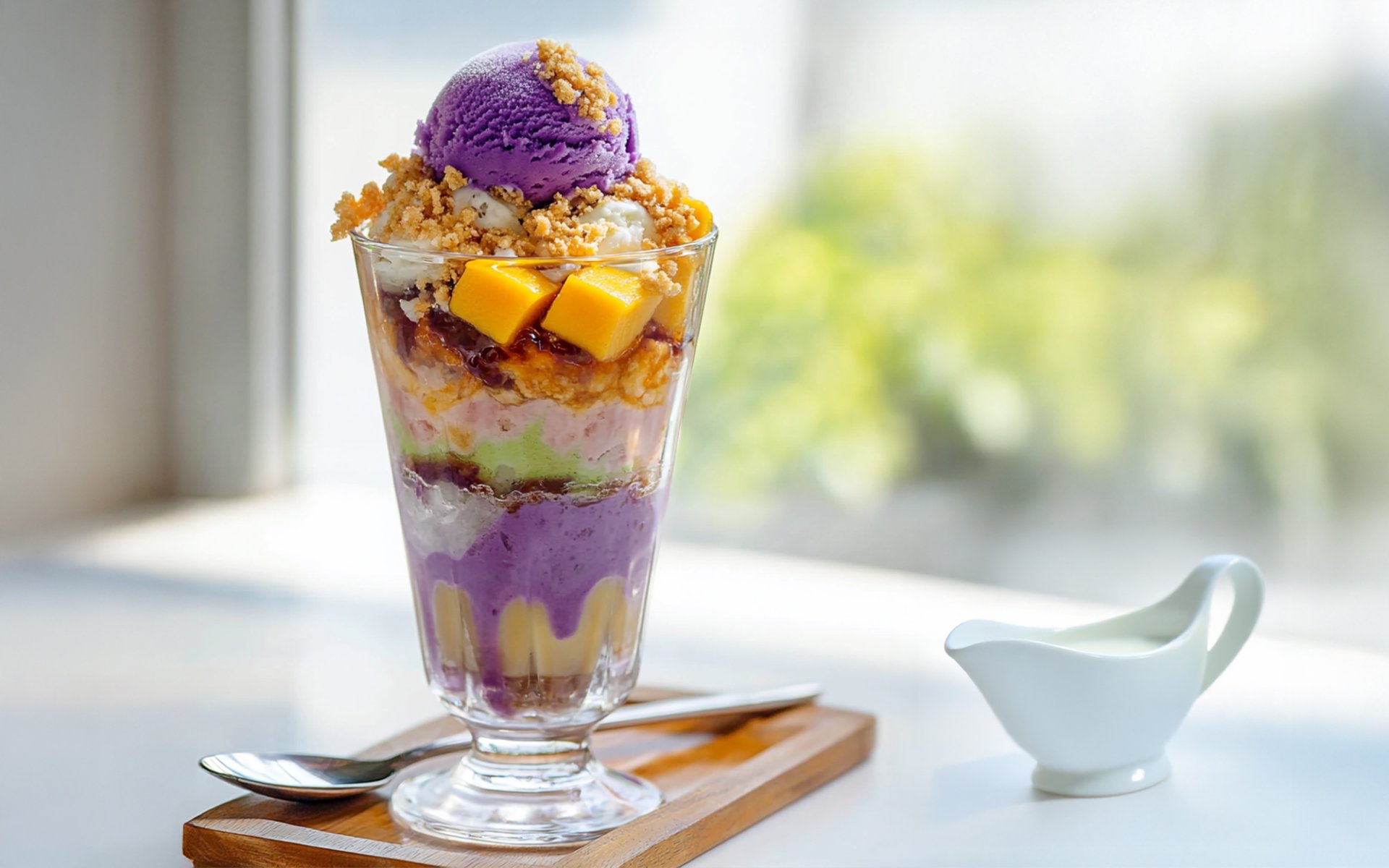Halo-halo

Halo-halo, or traditionally Haluhalo, meaning mix-mix, is a shaved ice dessert from the Philippines. Its basic components include shaved ice, evaporated milk, and various flavored syrups. Sweet additions like beans, fruits, jellies, and ice cream are then chosen and added. Its typically served in various containers such as bowls or tall clear glasses that showcase all the ingredients, commonly enjoyed for a refreshing treat.
The Philippines: A Melting Pot of Cultures
The Philippines is a convergence point of diverse cultures. It was under Spanish colonial rule for a long period, from the 16th to 19th centuries, which significantly influenced Filipino culture to this day, including language, dress, art, music, and a highly diverse cuisine rich in ingredients, including various fruits and desserts.
The Genesis Influenced by Japan and America
The origin of Halo-halo dates back to the pre-World War II era. Although the Philippines and Japan began their shared history in the 17th century (1601-1700), the period between 1920-1930 saw the largest influx of Japanese immigrants to the Philippines due to significant economic changes and population density in Japan. These Japanese settlers brought many aspects of their culture to the Philippines, one of which was Kakigori, a Japanese-style shaved ice dessert.
These Japanese immigrants adapted Kakigori using ingredients readily available in the Philippines, specifically Mung Bean, which was simmered with sugar to sweeten it, and seasoned with condensed milk. This shaved ice dessert was named Mong-ya and is known as the precursor to Halo-halo. At that time, ice was still an imported commodity from America, which meant its consumption was not yet widespread in the Philippines.
The Philippines also absorbed cultural influences from its complex relationship with America from 1898-1946. One significant event related to Halo-halo was the establishment of the first Insular Ice Plant by Americans in 1902, making ice widely available. This presented an opportunity for Japanese entrepreneurs to start selling more Mong-ya, and the dessert quickly became popular among Filipinos.
From Mong-ya to Halo-halo: Limitless Combinations
As time passed, the Japanese population in the Philippines dwindled, leading Filipinos to adapt Mong-ya using the vast array of local ingredients available. The consumption of shaved ice grew rapidly and diversified extensively, eventually evolving into the Halo-halo we know today. This change in name signifies the even greater variety of ingredients mixed together.
Other popular ingredients added to Halo-halo include palm fruits, macapuno (coconut sport), sweet corn, sweetened beans and saba bananas, jackfruit, various jellies, sago, sweet potatoes, and ice cream. Beyond personal choice, each region in the Philippines also has its unique Halo-halo variations. For example:
- Aling Talengs Restaurants Wintermelon Halo-halo: An old restaurant in Laguna, their Halo-halo includes red beans, white beans, ube (purple yam), macapuno, and sweetened grated coconut. This recipe has remained unchanged for over 70 years and continues to be a local favorite.
- Batangas Buko Halo-halo: Features only three toppings: macapuno, Pinipig (flattened, toasted glutinous rice), and Leche flan (Filipino caramel custard). This Halo-halo is adapted from a famous drink with similar ingredients.
Additionally, sweetened ube, ube jam, and ube ice cream are highly popular toppings for common Halo-halo. This popularity is due to both the ube trend in the Philippines and its beautiful purple color, which creates a new, distinctive visual identity for Halo-halo.
Halo-halo: A Symbol of Filipino Diversity
Halo-halo is a dessert with endless possibilities for ingredient selection, having evolved through a history of rich cultural diversity and adapting to contemporary preferences. It can be found in every corner of the Philippines. Halo-halo has been spread globally by Filipino migrants and travelers. Its vibrant colors from various components always make it stand out in media, making it one of the symbols of the Philippines in the eyes of the world.


